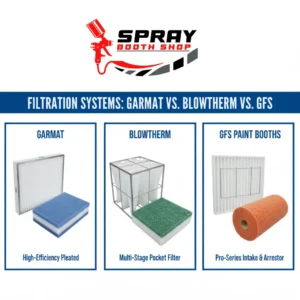
The Critical Role of Filtration in Modern Paint Booths
In the world of automotive and industrial finishing, the paint booth is the heart of the operation. It’s a controlled environment where a flawless finish is born. But the quality of that finish, the safety of the technician, and the environmental integrity of the facility all hinge on one critical, often overlooked system: filtration. The global Paint Booth Filter Market Size was valued at 1,596.9 USD Million in 2024 and is projected to grow, underscoring the escalating importance of this technology. Within this thriving market, leading manufacturers like Garmat, Blowtherm, and Global Finishing Solutions (GFS) have engineered their paint booths with specific filtration requirements designed to optimize performance.
Understanding which filters these top-tier spray booths use is not just a matter of maintenance; it’s a matter of maximizing a significant investment. The right filters ensure pristine air quality, efficient operation, and regulatory compliance, while the wrong ones can lead to costly rework, premature equipment failure, and safety hazards.
Impact on Finish Quality, Operator Safety, and Environmental Compliance
The choice of paint booth filters has a cascading effect on every aspect of the finishing process. For finish quality, intake filters are the first line of defense, preventing microscopic dust and dirt from contaminating fresh paint, which saves hours of buffing and polishing. For operators, both intake and exhaust filtration systems work together to create a safe breathing environment, capturing harmful paint overspray and volatile organic compounds (VOCs). Ultimately, robust exhaust filters are crucial for environmental compliance, as they prevent the release of regulated pollutants into the atmosphere. In fact, painting operations can be a significant source of pollutants; for example, it was found that approximately 80% of Ford’s toxic pollutants released into the environment came from painting operations, highlighting the critical role of effective filtration.
Garmat, Blowtherm, and GFS in the Paint Booth Market
Garmat, Blowtherm, and GFS are leading names in paint booth engineering, each taking a distinct approach to performance, technology, and filtration. Known for sturdy, adaptable designs, Garmat suits high-volume collision centers and demanding industrial setups. Meanwhile, Blowtherm emphasizes energy efficiency and airflow control for consistent finishes. Rounding things out, GFS (Global Finishing Solutions) brings modular systems and advanced filtration options that scale from small shops to large production lines.
A Brand-Specific Comparative Look at Filter Technologies and Best Practices
This guide will demystify the filtration systems specific to Garmat, Blowtherm, and GFS paint booths. We will dissect the fundamentals of paint booth filtration before taking a deep dive into the specific types of intake and exhaust filters each brand commonly employs. By understanding the “what” and “why” behind their filter choices, shop owners and managers can make more informed decisions about maintenance, replacement, and optimizing their booth’s performance for years to come.
How Filtration Drives Paint Booth Performance
At its core, a paint booth is a sophisticated air-handling system. Its primary function is to move a massive volume of air in a controlled manner to create the perfect environment for applying coatings while safely removing overspray and fumes. The filtration system is the gatekeeper of this airflow, ensuring what comes in is clean and what goes out is compliant.
The Core Function of Filtration Systems: Protecting Your Investment and Output
The fundamental purpose of a spray booth filtration system is control. It controls the quality of the incoming air to prevent defects in the paint job and controls the quality of the outgoing air to protect people and the planet. This dual function protects the financial investment in the booth, the value of the item being painted, and the long-term health of the business by ensuring consistent, high-quality output and adherence to regulations. Neglecting filtration can turn a high-performance asset into a source of constant rework and liability.
Key Filtration Stages: Intake, Exhaust, and Specialized Air Quality Control
Filtration in a modern paint booth occurs in two primary stages: intake and exhaust.
- Intake Filtration: This stage cleans the air before it enters the main painting chamber. It typically involves multiple layers, starting with prefilters at the air makeup unit (AMU) and culminating in high-efficiency ceiling diffusion media in downdraft booths.
- Exhaust Filtration: This stage captures paint overspray and other contaminants after the air has passed through the painting chamber and before it is vented outside. This is often a multi-stage process itself, designed to trap solid paint particles effectively. Specialized systems may also incorporate activated carbon filters to adsorb VOCs and chemical fumes, providing an additional layer of air quality control.
Primary Contaminants Addressed: Dust, Overspray, Fumes, and VOC Emissions
Filtration systems are target specific contaminants at different stages. Intake filters are removing ambient dust, pollen, and other airborne particulates that can cause “dirt in paint” defects. Exhaust filters are primarily to capture wet and dry paint overspray—the solid particles that don’t adhere to the target surface. Secondary exhaust filters or specialized carbon systems then address the gaseous contaminants, including chemical fumes and VOCs, which are byproducts of the paint and solvent evaporation process.
The Connection Between Airflow, Filter Media, and Optimal Booth Performance
Airflow, measured in cubic feet per minute (CFM), is the lifeblood of a paint booth. The design of a downdraft or crossdraft booth relies on consistent, predictable airflow to direct overspray away from the painted surface and into the exhaust filters. The filter media itself presents resistance to this airflow. As filters become loaded with contaminants, this resistance increases, reducing CFM. This drop in airflow can lead to slower flash and cure times, poor overspray removal, and a compromised finish. Therefore, selecting the correct filter media and adhering to a strict maintenance schedule is crucial for sustaining the peak performance engineered into the booth.
Intake Air Filtration: Creating a Pristine Painting Environment
The quest for a glass-smooth, defect-free finish begins with the air that enters the spray booth. Intake air filtration is responsible for transforming ambient, particle-filled air into a pristine, controlled stream that enables flawless paint application.
The Part of Intake Filters: Supplying Clean, Uniform Air to the Paint Zone
Intake filters, particularly ceiling filters in downdraft booths, serve a dual purpose. Their primary role is to remove virtually all dust and particulate matter down to a microscopic level. Their secondary, equally important role is to diffuse the incoming air, ensuring it flows downwards in a smooth, laminar, and non-turbulent pattern. This uniform airflow is essential for controlling overspray and achieving an even coating thickness across the entire vehicle or part.
Common Intake Filter Media: Polyester Media, Scrim-Reinforced Diffusion Filters
The most common materials for intake filtration are multi-layered synthetic media, typically made of polyester. High-quality ceiling filters, often referred to as diffusion media, feature progressively dense layers. The final layer, facing into the booth, is usually a fine, non-woven synthetic scrim that provides reinforcement and prevents filter fibers from migrating into the paint job. Manufacturers treat many premium diffusion media, including Filtrair FF-560 GX, with a light adhesive tackifier that captures and retains the finest dust particles.
Ceiling Filters and Their Importance (Downdraft Booths)
In a downdraft spray booth, the entire ceiling acts as a massive filter bank. The proper installation and quality of these ceiling filters are paramount. If the filters are of poor quality or are clogged, they can create turbulence and dead spots in the airflow. This disrupts the carefully engineered environment, allowing overspray to swirl and settle back onto the painted surface. Premium ceiling diffusion media ensures consistent air velocity across the entire cabin, which is critical for both the spray cycle and the bake cycle.
How Prefilters Protect Main Intake Filters and Air Make-Up Units (AMUs)
Before air even reaches the main ceiling filters, it passes through a set of prefilters, usually located at the air intake of the Air Make-Up Unit (AMU). These less-expensive, lower-efficiency filters (often panel or bag filters) are designed to capture the largest particles—insects, leaves, and coarse dust. This “pre-cleaning” stage significantly extends the life of the more expensive final diffusion media, protecting the primary filters and the internal components of the AMU from premature loading and potential damage.
Achieving High Finish Quality Through Superior Dirt Control and Particle Removal Efficiency
Ultimately, the quality of the intake filtration system is directly visible on the final product. A system with high particle removal efficiency, often rated at over 99% for particles in the 7-10 micron range, is the difference between a job that requires extensive de-nibbing and polishing and one that comes out of the booth nearly perfect. Investing in superior intake filters is a direct investment in reducing labor costs and increasing throughput.
Exhaust Air Filtration: Managing Overspray and Protecting the Atmosphere
Once the air has passed through the painting cabin, carrying with it atomized paint particles that didn’t adhere to the substrate, it must be thoroughly cleaned before being released. This is the critical function of the exhaust filtration system.
The Purpose of Exhaust Filters: Capturing Paint Solids and Contaminants
The primary job of exhaust filters, often called paint arrestors, is to capture and hold the solid components of the paint overspray. This prevents a buildup of flammable paint residue in the exhaust stack and fan, which would create a serious fire hazard. Furthermore, it prevents the release of these particulates into the local environment, protecting surrounding property and air quality. A clogged exhaust system can be detrimental, as a paint booth can be the most energy-intensive part of a body shop, and poor airflow forces the system to work harder.
Common Exhaust Filter Media: Fiberglass Filters, Pleated Paper
Several types of media are used for exhaust filtration, with the choice depending on the booth design, paint type, and production volume.
- Fiberglass Filters: These are the most common and economical choice. They consist of a lofted fiberglass mat that is progressively dense from the air-entering to the air-leaving side, allowing the filter to load with paint throughout its depth.
- Pleated Paper/Cardboard Filters: These filters use a baffled or pleated design to create a tortuous path for the air, causing paint particles to impact and adhere to the surfaces. They often have a high paint-holding capacity.
- Multi-Layer Synthetic Media: Similar to intake filters but designed for higher capacity, these filters offer efficient capture and are often used as a secondary or final exhaust stage.
Preventing Contamination and Meeting Environmental Regulation
Proper exhaust filtration is a legal and safety requirement. Regulations from bodies like the National Fire Protection Association (NFPA) mandate the use of listed paint arrestors to mitigate fire risk. Environmental regulations, such as the National Emission Standards for Hazardous Air Pollutants (NESHAP) 6H (Rule 319 in some regions), require a minimum filter efficiency to control particulate matter emissions from finishing operations. Using the correct, certified exhaust filters is essential for compliance.
Addressing Fumes and VOC Emissions: The Role of Multi-Stage and Carbon Filtration
While standard exhaust filters are excellent at capturing solid particles, they do not capture gaseous VOCs. Facilities in areas with strict air quality rules—or those aiming to reduce their environmental footprint—must add a secondary filtration stage. They typically use activated carbon filters. The carbon’s porous structure adsorbs VOC molecules and scrubs them from the exhaust airstream before the facility vents it.
Garmat Paint Booths: Filtration Solutions and Their Distinctive Features
Garmat USA designs its paint booths for durability and high performance, and its filtration systems are engineered to match. They utilize a combination of proven filter media types to ensure a clean painting environment and effective overspray capture across their range of automotive and industrial models.
Garmat’s Approach to Intake Filtration: Standard and High-Performance Ceiling Filters
Garmat booths typically employ full-ceiling coverage with high-quality diffusion media for their downdraft models.
Like other premium manufacturers, they often specify high-efficiency media such as industry-standard Filtrair FF-560 GX or equivalent filters. Suppliers provide these filters as pre-cut pads or blankets sized for ceiling grids in models like the Garmat 3000. The goal is to provide laminar, particle-free airflow essential for achieving the high-quality finishes Garmat users expect. The AMU always includes prefilters that protect these crucial ceiling filters.
Garmat’s Exhaust Filtration: Robust Systems for Overspray and Particulate Control
For exhaust filtration, Garmat booths often utilize a multi-stage approach. The primary stage, located in the floor pits or exhaust plenum, typically consists of high-capacity fiberglass paint arrestor rolls or pads. This initial layer captures the bulk of the wet overspray. Following this, many Garmat designs incorporate secondary bag or pocket filters. These filters offer a much larger surface area and capture finer particles that slip past the primary arrestors, ensuring the system discharges cleaner air.
Advanced Filtration Options and Waterborne Compatibility with Garmat Booths
Recognizing the industry’s shift towards waterborne paints, Garmat designs facilitate the necessary airflow and filtration to handle these coatings effectively. Their systems are fit to manage the higher volume of air and longer flash times waterborne paints require. For shops needing to meet stringent VOC regulations, Garmat can integrate advanced filtration options, including carbon-based systems, to complement their standard particulate filtration, offering a complete solution for both quality and compliance.
Blowtherm Paint Booths: Filtration Technology for High-Performance Applications
Blowtherm is renowned for its precision-engineered paint booths that emphasize powerful airflow and energy-efficient performance. Their filtration systems are integral to this philosophy, designed to maintain optimal operating conditions for high-end automotive refinishing.
Blowtherm’s Intake Filtration Excellence: Ensuring Optimal Air Quality for Premium Finishes
Blowtherm places a significant emphasis on the quality of its intake air. Their downdraft booths feature comprehensive ceiling filter systems that use premium-grade diffusion media. Blowtherm booths commonly use filters equivalent to Filtrair FF-560 GX or L560 for fine-particle efficiency and excellent distribution. Their commitment lets AMUs deliver powerful, clean, consistent, turbulence-free airflow to the cabin, enabling flawless, high-gloss paint finishes.
Blowtherm’s Exhaust Systems: Efficient Overspray Arrest and Environmental Stewardship
The exhaust systems in Blowtherm booths are high efficiency and longevity. They typically employ a multi-stage process to manage overspray. The primary filtration often consists of easily serviceable fiberglass paint arrestor pads or rolls in the floor pit. To enhance capture efficiency and protect the exhaust fan and ductwork, Blowtherm adds secondary filters—such as high-capacity pocket or bag filters—after the primary stage. This two-stage setup removes particulates effectively while maintaining the strong, consistent exhaust draw that defines Blowtherm booths.
Advanced Filtration and Waterborne Readiness in Blowtherm Booths
Blowtherm equips its booths to handle modern paint technologies, including waterborne coatings. Filtration systems complement the advanced controls and powerful air handling, sustaining high airflow even as they load. As a result, the system meets the increased drying and flashing demands of waterborne paints without compromising finish quality. The robust engineering allows for the integration of specialized filtration solutions to meet any local environmental or operational requirement.
GFS Paint Booths (Global Finishing Solutions) : Comprehensive Filtration Systems
Global Finishing Solutions (GFS) is a leader in paint booth technology, known for its innovation and comprehensive system design. A key part of their performance advantage lies in their proprietary and carefully selected filtration media, designed to work in concert with their booth’s airflow engineering. GFS not only uses industry-best standards for intake filtration, often employing high-quality diffusion media like the Filtrair FF-560 GX in their ceiling panels, but they have also developed their own advanced solution for the exhaust stage.
Their standout innovation is the GFS WAVE® exhaust filter. This patented media features a unique wave-like pattern that significantly increases the filter’s surface area compared to traditional flat or pleated media. This design offers several distinct advantages: it allows the filter to capture and hold more paint overspray (a concept known as depth-loading), extending the filter’s service life and reducing the frequency of replacement. This increased capacity also helps maintain more consistent airflow for a longer period, preventing performance degradation as the filter loads. The GFS WAVE® is a versatile, single-stage media that demonstrates the company’s commitment to pushing filtration technology forward to enhance overall spray booth performance, reduce operational costs, and ensure environmental compliance.
Final Verdict: Garmat vs. Blowtherm vs. GFS Filter Choices
The filtration system within a paint booth is far more than a simple consumable; it is a dynamic component that directly dictates finish quality, operational efficiency, operator safety, and regulatory compliance. As we’ve seen, industry leaders like Garmat, Blowtherm, and GFS engineer their booths around specific filtration principles. Garmat focuses on robust, multi-stage systems for durability, Blowtherm prioritizes media that complements its high-performance airflow, and GFS innovates with proprietary solutions like the WAVE® filter to extend service life and maintain consistent performance.
For any shop owner or manager, the key takeaway is that one size does not fit all. Using the correct replacement filters—whether it’s high-efficiency ceiling diffusion media for the intake for the exhaust—is critical to leveraging the full potential of your paint booth investment. Adhering to a proactive maintenance schedule for filter replacement is not an expense but a crucial practice that prevents costly rework, minimizes energy consumption, and ensures a safe, productive, and profitable finishing operation. By understanding the specific needs of your brand of spray booth, you can ensure it performs at its peak, delivering flawless results with every cycle.
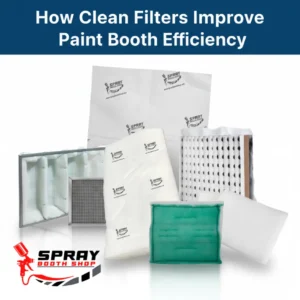 How Clean Filters Improve Paint Booth Efficiency and Finish Quality
How Clean Filters Improve Paint Booth Efficiency and Finish Quality 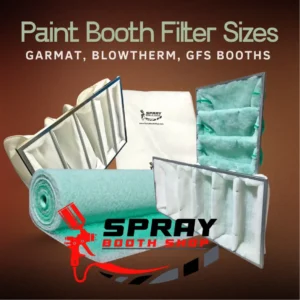 Paint Booth Filter Sizes Explained: Finding the Perfect Fit for Garmat, Blowtherm, and GFS Booths
Paint Booth Filter Sizes Explained: Finding the Perfect Fit for Garmat, Blowtherm, and GFS Booths  The Differences Between Pre-Filters, Intake Filters, and Exhaust Filters
The Differences Between Pre-Filters, Intake Filters, and Exhaust Filters  Your Step-by-Step Guide: Installing a New Paint Booth Filter Flawlessly
Your Step-by-Step Guide: Installing a New Paint Booth Filter Flawlessly 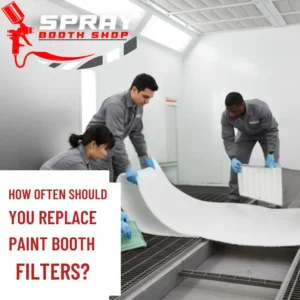 How Often Should You Replace Paint Booth Filters? A Complete Breakdown by Booth Type
How Often Should You Replace Paint Booth Filters? A Complete Breakdown by Booth Type